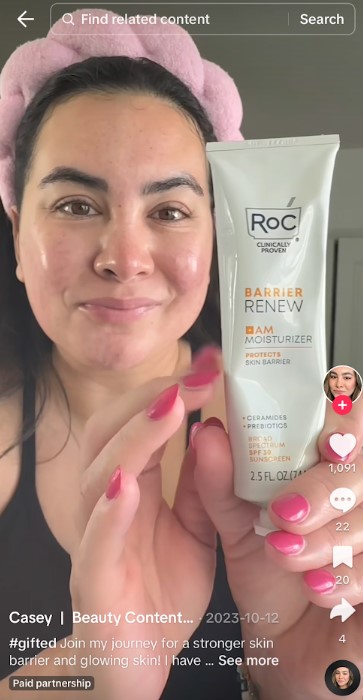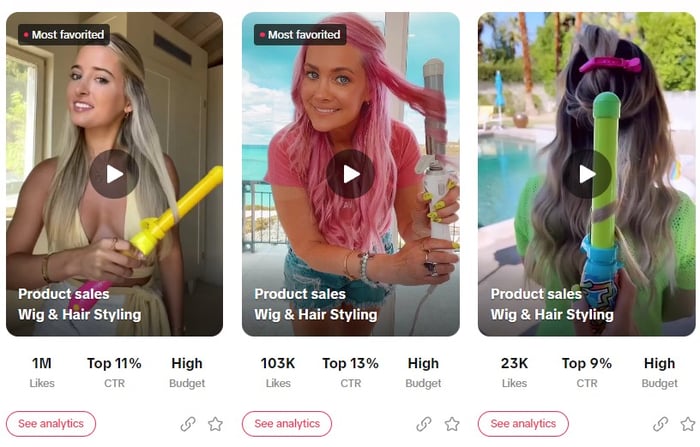
Is influencer discovery getting more difficult?
We know that it seems backward as the creator economy booms. Not to mention the fact that so many influencer search tools promote collaboration opportunities with "millions of creators."
So why is finding influencers still one of the top challenges of brands we talk to? Here's our take:
Most marketers are stuck in influencer discovery limbo.
You want more control of finding influencers but the process is too time-consuming DIY.
But the influencer search tools you’ve tried result in mismatched collabs or unexpected legwork.
In this post, we’ll dig into the downsides of most influencer discovery tools and where they fall short. We'll also explore how brands can find relevant influencers faster by rethinking their approach.
Why Most Influencer Discovery Tools Don’t Deliver the Best Collabs
Brands are 100% in the right to shop around to find the best influencer platform based on their goals.
After all, every brand has different goals and expectations!
So, why do most influencer discovery tools struggle to produce authentic, long-term collabs? Below we explore the reasons why most tools don’t deliver the results or time-savings that brands need.
1. The Definition of “Influencer” Has Changed (But Influencer Search Platforms Are Stuck in the Past)
The phrase “influencer” has a lot of baggage.
Likewise, the concept of what it means to be an influencer has evolved significantly from what it was even just a couple of years ago.
The reality? The era of the picture-perfect influencer is over.
Honestly, this has been the case for a long time coming.
If your influencer discovery tool relies on follower count or arbitrary metrics to define an “influencer,” you’ll miss the best creators for your brand. Not to mention massively limit your search results.
Check out this post from a TikTok creator with >6,000 followers who earned nearly 500,000 views with a collab post. Note how she nails all of the brand’s talking points and promotes the product beautifully but does so in a way that’s real and authentic.

Source
Unfortunately, most influencer discovery tools don’t feature these high-impact creators because of rigid requirements related to follower count.
If your definition of influencer to too narrowed to a specific aesthetic or audience size, you’re going to struggle to find the best creators for your brand.
Because much like followers don’t matter for brands, the same largely applies to influencers.
We’ve found that micro-influencers and creators with follower counts ranging from roughly ~10,000 to ~100,000+ represent a sort of sweet spot when it comes to reach and engagement. Not only that but they’re also hungry to impress brands and eager to grow their accounts.
2. Many Brands Don’t Know What They Want When Searching for Influencers (and That's Okay!)
You can’t make the most of an influencer discovery tool if you don’t know what you’re looking for.
Pop quiz: What does your brand’s ideal creator look like?
And no, this isn’t a trick question!
But it’s a surprisingly tough one for many brands to answer.
The reality? Many brands don’t know who they’re looking for when finding influencers.
That’s not a dig at you, by the way! Conducting an influencer search is overwhelming even with a platform. The fact that there are so many creators to dig through doesn’t help.
This is a piece of influencer marketing where technology can do a ton of heavy lifting for brands to save time and find relevant creators.
For example, programmatic influencer matchmaking makes it possible for brands to immediately partner with 100s or 1000s of creators ASAP. Doing collabs at that scale on your own isn't realistic.
Your influencers should align directly with your customers and target audience. This includes their wants, needs and pain points. Brands are severely limited in their influencer search if they can only assess creators based on their content and surface-level engagement metrics.
Contrast this with an influencer platform like Statusphere that programmatically matches brands with vetted creators from our network using 250+ first-party data points.
Unlike other influencer discovery tools, our software outright eliminates the need to find influencers yourself while also encouraging relevant matches based on your products and target audience.

Also, consider that finding the best influencers for your brand might require a mindset shift.
This piggybacks on our first point about why micro-influencers are so valuable to brands even if their content isn’t polished.
Consumers today are tired of hyper-curated, art-directed content from influencers with millions of followers. We’ve seen this firsthand and research confirms that traditional influencer promotions are “unrelatable" to most buyers.
This also highlights why tactics like TikTok Spark Ads based on creator content are crushing it for brands right now. For example, brands like Beachwaver have sold over 900,000 products on TikTok Shop through “raw” influencer-based promotions.

Source
Again, small creators at scale are proven to produce big results. That's because consumers crave “real” promotional content. The fact that 70% of consumers specifically claim that they prefer unpolished content on social media speaks for itself.
3. Most Influencer Search Engines Aren’t Actually Search Engines
This is a big one.
When an influencer discovery tool advertises itself as offering access to “millions of creators,” they’re telling you outright that their creators’ profiles haven’t been fully vetted.
Because it’s impossible to audit that many influencers by hand.
These tools offer access to millions of social media profiles with third-party information that may be outdated, inaccurate or downright fake.
Sure, some of these profiles might be for relevant influencers. Chances are most won’t be.
Brands should be wary of influencer databases that scrape creator data and aggregate lists of influencers without opt-ins. A lack of first-party creator data also makes it much more difficult to search for influencers, especially for niche audiences.
For example, there’s a big difference between looking for “beauty influencers” versus “natural skincare influencers for women aged 40+.” If your influencer discovery tool is limited to the former, you're going to have to really get your hands dirty to find the right creators.
This drives home the value of self-reported data from creators and automated creator matchmaking. This approach to finding creators not only saves time but allows you to get super granular with your influencer targeting to create the most relevant content possible.
Why the Influencer Discovery Process is Broken for Creators, Too
Brands aren’t the only ones dealing with headaches from influencer search tools.
Just as you’re frustrated with combing through countless profiles and trying to manage outreach and communications, creators are bogged down by the amount of work that goes into scaling their collaborations.
Trust us: Creators are drowning in collab requests and DMs already. Couple that with constant back-and-forth negotiations and requests from brand managers. It’s understandable why influencers don’t answer emails from brands.
Meanwhile, Creators get hit with “random” outreach from potentially irrelevant brands all the time. Scammers, too. They’re forced to be on the defensive and you’re tasked with breaking through the noise and making a strong impression.
And so influencer discovery tools that require cold outreach don’t build the foundation for positive influencer relationships.
The cold outreach, on-again-off-again approach to influencer marketing is super inefficient for both parties. It doesn’t encourage long-term partnerships, either.
This is yet again where influencer matchmaking saves the day.
For example, partnerships in Statusphere’s platform only happen when a creator actively wants to collaborate with your brand. As a result, creators get to make posts with products they love and brands are only matched with relevant creators. It’s a win-win.
Also, brands and creators collaborate within the same platform for a stress-free experience for everyone. Programmatic matchmaking means you don’t have to send a single email or chase down creators for their posts. All of your content and campaign KPIs are populated automatically.
Meanwhile, influencer management tasks like communication, compensation and briefing are streamlined (or automated!) to eliminate needless back-and-forth. We also make it possible for brands to upload their own creators to our platform to make the most of you influencer relationships you've already built.
Why It’s Time for Brands to Rethink What Influencer Discovery Tools Can Do
The problem with most influencer discovery tools is that they assist with finding influencers instead of automating the process. This leaves a ton of room for error (for both brands and platforms themselves) which results in poor matches and underwhelming collabs.
Again, this probably sounds familiar:
- You’re overwhelmed with searching for influencers DIY. So you test-drive an influencer discovery platform to do the dirty work.
- You’re disappointed with mismatched results or a lack of creators for your audience and niche. You also realize you’re still super involved in searching for influencers, vetting their profiles and managing communication.
- Discouraged, you decide to give DIY influencer discovery another go since you’re already doing a lot of the legwork.
- Rinse and repeat.
Escaping this trap starts by rethinking how you find influencers. Rather than take on all of the tasks related to influencer discovery yourself, consider how the right platform can outright take the process off your plate.
That’s exactly what we built Statusphere to do.
Our micro-influencer marketing platform was built to help brands scale their influencer collaborations in a fraction of the time. Since our software streamlines everything from fulfillment and matchmaking to influencer management and more, brands can adopt an always-on influencer strategy without all of the manual legwork.
And we’ve already helped 400+ brands earn 75,000+ pieces of rights-ready UGC.
Want to learn more about how our platform works? Get in touch with one of our experts to see how we can help your brand find the right influencers and scale content ASAP.
